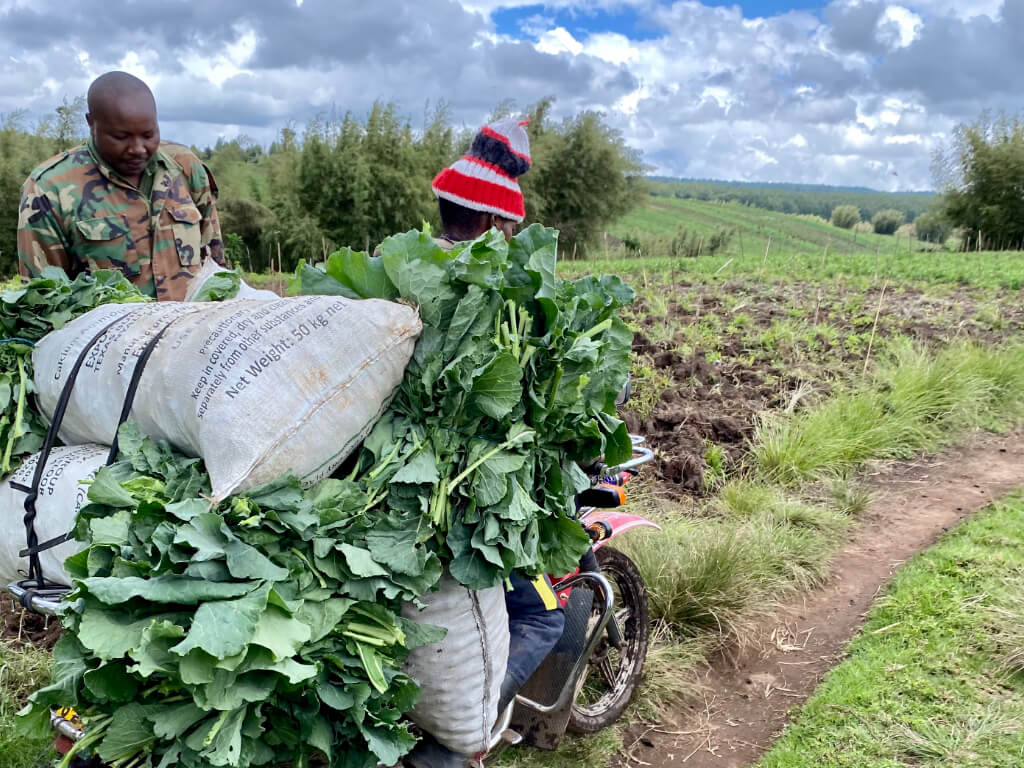LANDSCAPE PARTNERSHIP
LANDSCAPE
- Lari, Kiambu County, Kenya
The Lari Landscape is part of the larger Kikuyu Escarpment that lies on the eastern slopes of the Aberdare Mountains of central Kenya 30 km northwest of Nairobi. The communities living in this area are predominantly engaged in agricultural activities which includes cultivation of tea and high-value horticultural products. Together with livestock rearing, these constitute the backbone of the economy.
The region’s unique indigenous forests serve as a rich habitat for several wildlife species, especially birds. The landscape also represents a key water catchment for the region and supplies several crucial ecosystem services, such as clean water, carbon sequestration, soil erosion protection and ecotourism. However, several risk factors critically undermine the capacity of local communities to both sustain livelihoods and care for the environment. Poor infrastructure and weak government policies that inhibit market access have forced many farmers to adopt unsustainable agricultural and forestry practices leading to gradual depletion of natural resources.
Confronted with these challenges, local stakeholders decided to join forces to counter these negative trends. Kijabe Environment Volunteers (KENVO), a local civil society organization has mobilized communities and adopted a landscape perspective to reconcile conservation and development objectives.
Lari landscape is one of the country’s pioneers in practicing Integrated Landscape Management (ILM). This approach has strengthened the partnership and collaboration between KENVO and various stakeholders, including representatives of civil society, the private sector and government agencies. 1000 Landscapes is helping the Lari LP usher in a new phase to their partnership by introducing new financial flows that improve market access and support for communities.

Landscape Snapshot
AREA
The Lari landscape is part of the rapidly growing Kiambu County just north of Nairobi. The vibrant horticultural and dairy production in the landscape mainly target Nairobi as the main market due to its proximity from the city. Poor infrastructure, growing population, a lack of government support and dependence on ever changing rainfall patterns are some of the primary challenges in the landscape.
Lari has nearly 90% of the population engaged in cultivation. The majority of these people depend on small-scale farming with the average size of the land being 0.8 hectares where they grow various types of cash and subsistence crops and keep livestock in their small holdings.
Agricultural products:
- Vegetables eg kales, cabbages, spinach
- Legumes eg beans, peas
- Tubers eg potatoes, carrots
- Cereals eg maize
- Fodder crops eg napier grass
- Fruits eg pears, avocados, plums and peaches
- Small scale flowers and herbs
- Tea
- Coffee
- Pyrethrum
- Timber and wood products
- Livestock products eg dairy, sheep, poultry, pigs, etc
- Carbon dioxide
- Quarry stones
- Water
This area consists of the Aberdare, Kikuyu Escarpment, and Kipipiri Forest Reserves as well as Lake Ol bolossat and the surrounding riparian system. This massive range is also characterized by rugged terrain with deep valleys, gorges and hills.
- Lari Landscape Partnership
For many years, the Lari Landscape and its residents struggled to balance natural resource use with the protection of the region’s rich biodiversity. KENVO’s activities have successfully slowed the expansion of agricultural lands into forest areas by diversifying smallholders’ economic opportunities and by encouraging the implementation of agroecological practices. The creation of the Lari Landscape Partnership was an instrumental step in bringing seemingly disparate land users together to enable more sustainable use of the area’s timber resources while also supporting farmers with additional livelihood sources such as beekeeping, ecotourism and more. A unique collaboration with the Kenya Forest Service provided farmers with access to fertile cropland while simultaneously reforesting the area with indigenous tree species.
The partnership has now grown into a collaboration between over 20 farmers’ associations, NGOs, businesses and regional and national government agencies. In preparation for a new phase for the partnership, the Lari LP has completed the landscape capacity assessment to uncover lingering needs and new opportunities for stakeholder collaboration, and is preparing to engage with 1000L’s new finance innovation tools to help redirect more funding towards key initiatives within the partnership.


